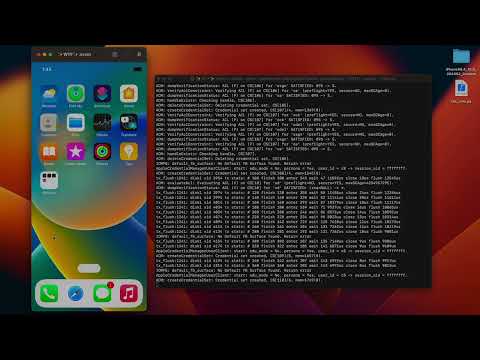Sam Collinson
- 65 Followers
- 143 Following
- 425 Posts
New blog post (about an old exploit): tachy0n.
For iOS 13.0-13.5, dropped as an 0day at the time.
iOS 16 under Virtualization framework

iOS 16 under Virtualization framework
High level diff of iOS 18.4 beta 2 vs. iOS 18.4 beta 3 🎉
https://github.com/blacktop/ipsw-diffs/blob/main/18_4_22E5216h__vs_18_4_22E5222f/README.md
UPDATED: iOS 18.3.1 vs. iOS 18.4b1 diff to include KDK DIFF 🎉
https://github.com/blacktop/ipsw-diffs/blob/main/18_3_1_22D72__vs_18_4_22E5200s/KDK.md
High level diff of iOS 18.4beta1 vs iOS18.4beta2 🎉
https://github.com/blacktop/ipsw-diffs/blob/main/18_4_22E5200s__vs_18_4_22E5216h/README.md
Hi! The slides for my talk today at RE//verse 2025 (@REverseConf), "Reconstructing Rust Types: A Practical Guide for Reverse Engineers", are now published: https://github.com/cxiao/reconstructing-rust-types-talk-re-verse-2025
It's been great to catch up with so many folks - if you're at the conference, come by and say hi!
The presentation was recorded, and the video will be published at a future date!
#reverseengineering #rust #rustlang #malware #infosec #REverse2025
From Bluesky it turns out that AMD microcode can be injected in certain cores bypassing security checks because a weak hash function is used¹…
We have seen this before, of course, all the way back to the AMD K8 core in a very simple and short article by TESO.
I remember it well, I used it in my research and subsequent hacks, but it does leave me rather surprised that this is happening again.
On a separate note: I think having the possibility to modify microcode is wonderful and fun. It is an assembler to the processor, it lets you do some weird and wonderful things within the space of the microcode update store, of course (and its volatility: it has to be re-injected at boot, for a good reason, believe me  )
)
__
¹ https://github.com/google/security-research/security/advisories/GHSA-4xq7-4mgh-gp6w
